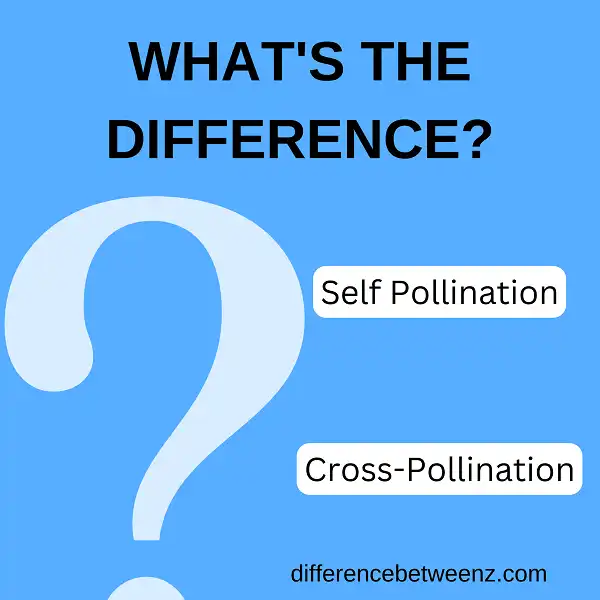There are many differences between self-pollination and cross-pollination. Cross-pollination is the process of transferring pollen from the stamen of one flower to the pistil of another flower. This is done by either manually transferring the pollen or by using an instrument such as a bee. Self-pollination is when the pollen from the stamen of one flower is transferred to the pistil of that same flower. There are pros and cons to both methods, but which one you choose will depend on your particular situation.
What is Self Pollination?
Self-pollination is the transfer of pollen from the anther to the stigma of the same flower, or of a different flower on the same plant. This usually happens without the help of insects or other animals. Many plants are able to self-pollinate because their flowers have both male and female parts. The anthers produce the pollen, and the stigmas provide a place for the pollen to land and fertilize the ovules.
Self-pollination can also occur when a flower’s pollen lands on another part of the same flower, such as the stigma or pistil. Self-pollination often results in fewer genetic changes than cross-pollination, because the pollen is coming from the same plant. This can be beneficial for plants that are trying to preserve a particular trait. However, it can also lead to inbreeding and lower genetic diversity.
What is Cross-Pollination?
Cross-pollination is the process by which pollen is transferred from the male organ or stamen of one flower to the female organ or pistil of another. This usually happens when insects, such as bees, visit flowers in search of nectar and inadvertently transfer pollen in the process. Cross-pollination is essential for the reproduction of many plant species, as it ensures that genetic material is exchanged between different individuals.
This exchange of genes increases the chances that some plants will possess traits that make them better adapted to their environment and more likely to survive and reproduce. As a result, cross-pollination plays an important role in maintaining biodiversity and ensuring the long-term health of ecosystems.
Difference between Self and Cross-Pollination
Self and Cross Pollination are two types of pollination. Self-pollination is when the pollen from the male organ or stamen of a flower falls on the female organ or pistil of the same flower or another flower on the same plant. Cross-pollination is when the pollen from the male organ or stamen of a flower falls on the female organ or pistil of a different plant.
- Self-pollination usually happens in flowers that have both the male and female organs on the same flower, but it can also happen if the pollen falls from one plant to another plant of the same species.
- Cross-pollination usually happens when there are two different plants of the same species near each other, but it can also happen if the pollen falls from one plant to another plant of a different species.
- Self and cross-pollination can both happen at the same time, but self-pollination happens more often. Self-pollination happens more often because it is easier for the pollen to fall from the male organ to the female organ when they are on the same flower or on the same plant.
- Cross-pollination happens less often because it is harder for the pollen to fall from one plant to another plant. Self and cross-pollination are both important for plants because they help to make sure that plants can reproduce.
- Cross-pollination is especially important for plants because it helps to make sure that there is genetic diversity in plants. This is important because it helps to make sure that plants can adapt to changes in their environment. Self and cross-pollination are both natural processes that happen without humans needing to do anything.
Humans can help with self and cross-pollination by planting different types of plants next to each other, by making sure that there are bees or other insects around, or by using a paintbrush to transfer pollen from one plant to another. Self and cross-pollination are both important for plants, and humans can help with both types of pollination.
Conclusion
So far we’ve looked at how self-pollination works and see that it helps maintain genetic variation in a population. But what about when two different populations of the same species meet? This is called cross-pollination, and it can result in some very interesting outcomes.


